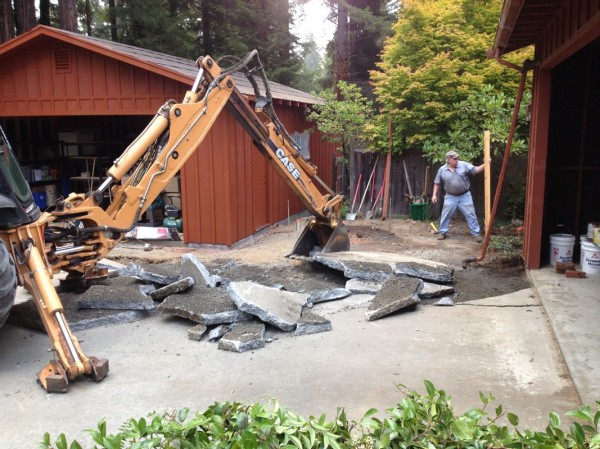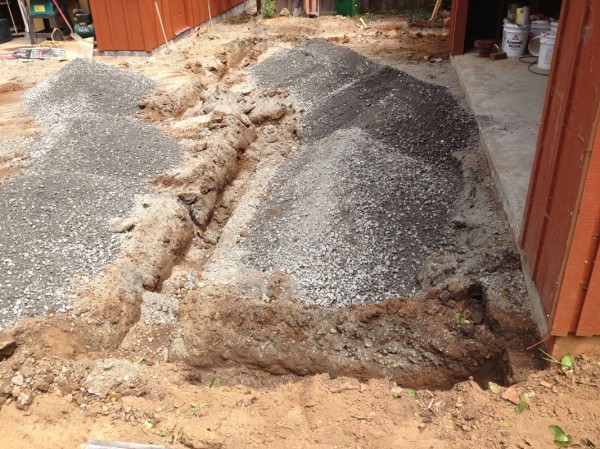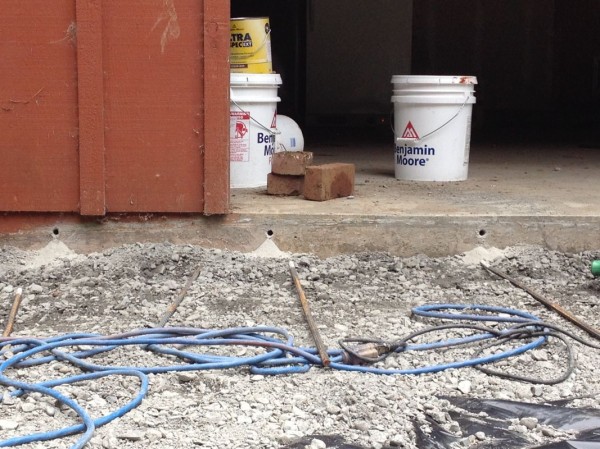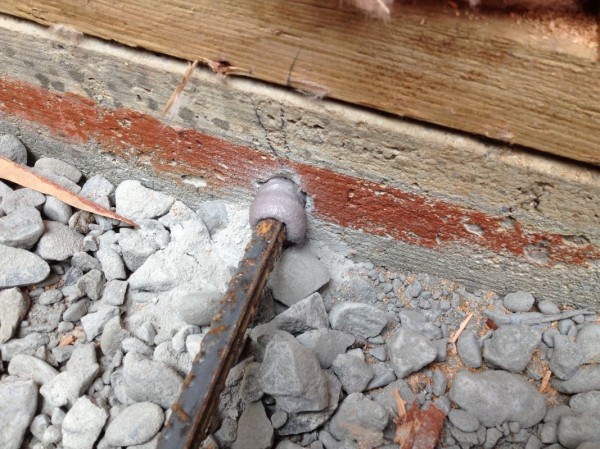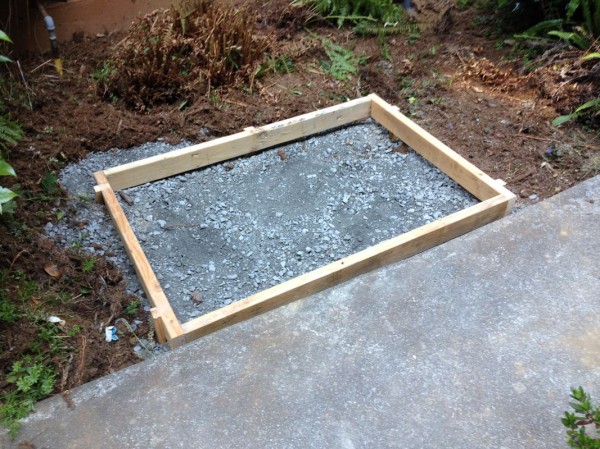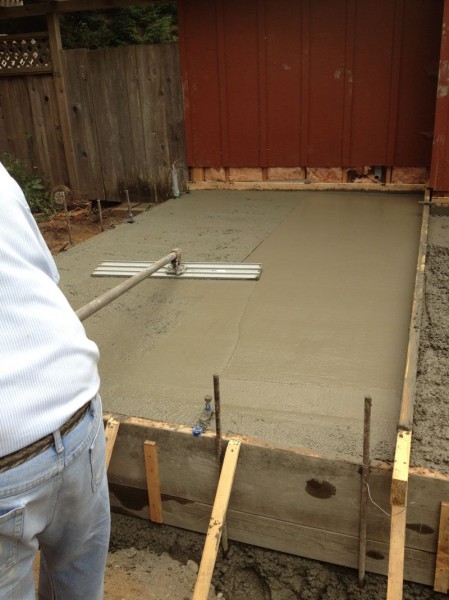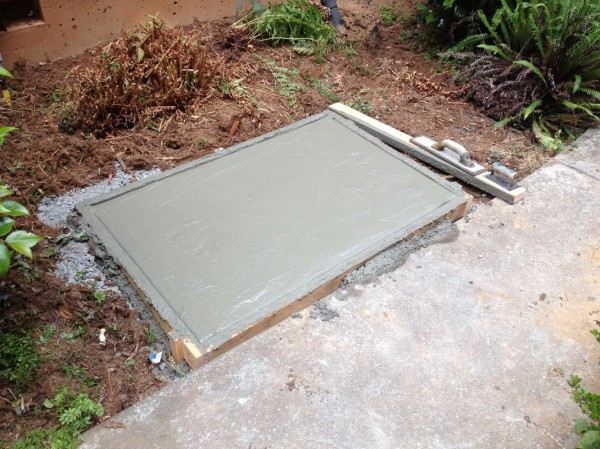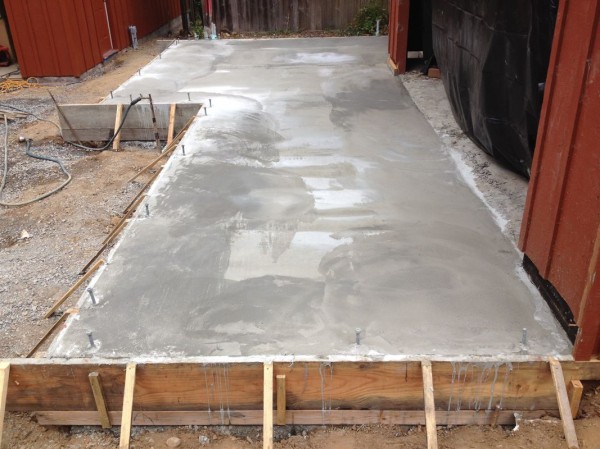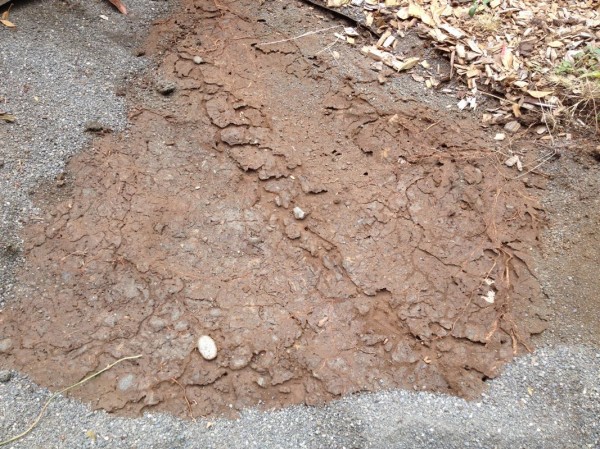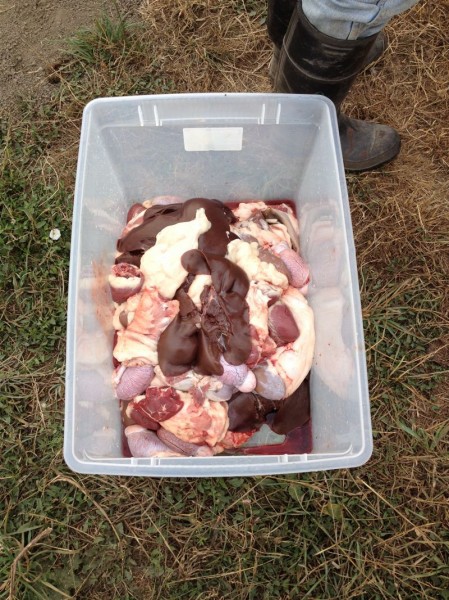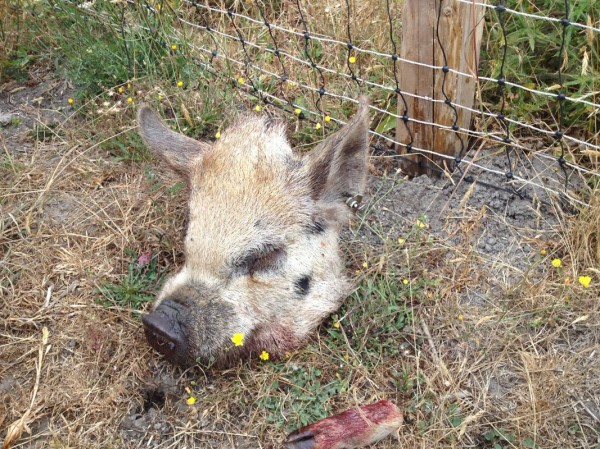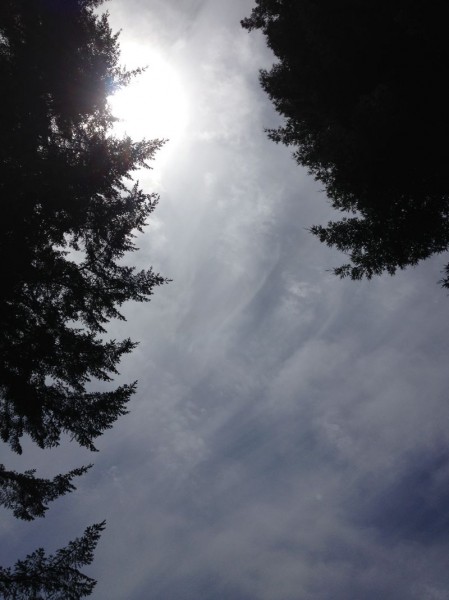Journal #24: Creative Destruction
by Miles Raymer
With the garage nearly finished, Dan, Sean and I have turned our attention to the larger project of extending the north wall of my mother’s house and converting our old garage into a cozy dwelling space. Building a house addition is a different beast than constructing something from scratch. Not only do designers and builders have to tear down parts of the existing house and preserve others, but they must also ensure that the addition doesn’t compromise the structural integrity or aesthetic appeal of what came before. It’s a kind of creative destruction.
To begin the process, we needed to build a form to extend the existing garage foundation. This necessitated another visit from Larry Cardoza and his tractor. Larry removed the concrete driveway and dug the trenches for the new form.
Creative destruction takes on many forms, some of which are more wasteful than others. I found it a bit silly that we needed to tear out all that concrete just to pour another slab, but in this case there wasn’t any way around it. Sometimes demolition is the only road to a blank slate.
To secure the new slab, we had to create continuity between the our new rebar grid and the existing slab. I used a heavy drill to bore holes in the concrete into which the rebar could be inserted. We placed the holes about 2″ from the slab’s surface, and 2′ apart.
We constructed the rest of the rebar grid around these segments jutting from the existing foundation. This is especially important to prevent major damage during earthquakes, as the two different slabs will be less likely to break apart at the splitting point.
This new process also taught me something about electrical conduits. We had to relocate an existing conduit that will be covered up by the addition, as well as set up conduits that will allow us to run electrical into the new garage. Portions of these conduits are underground, but they can also be inside the foundation. If they are in the slab, conduits need to be covered with a protective wrap to prevent erosion.
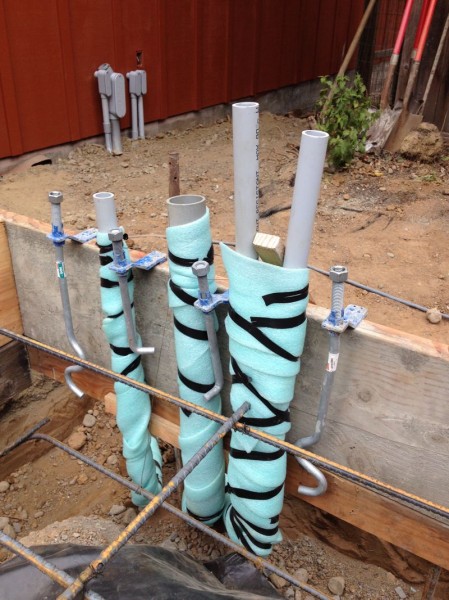
Wrapping these was a real pain in the ass, but Dan and Sean and I split up the work to make it more bearable
In addition to the form for the new slab, we had one more small project before the concrete truck arrived: forming a small slab for our new generator. Part of our addition plan involves installing a back-up generator with a switch that will kick in automatically during a power outage. This generator isn’t just a potential lifesaver in a disaster situation, but also important for preserving the food in our two large freezers during any unexpected blackout. We needed a small slab on which to place the generator, so I cleared out a space next to the house and Dan and Sean built a 3′x4′ form.
The concrete truck arrived early yesterday morning. Because the new slab is much smaller than the one we poured for the new garage, we didn’t need to hire someone to pipe the concrete. The driver simply extended his truck’s chute and we poured straight into the form.
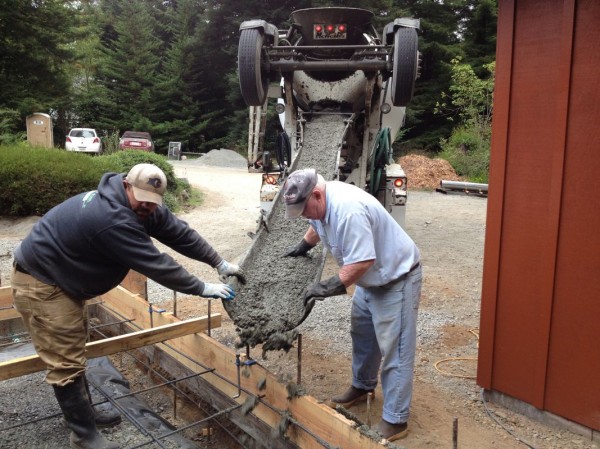
Dan and Sean worked the chute while I spread the concrete and made sure it set up against the form boards
When the slab was poured, we began using the trowels and bull float to smooth out the surface. Because this slab won’t be visible, Dan and Sean decided not to hire a finisher. Still, they were meticulous about finishing the surface to the best of their ability. This is one of the many things I love about these guys: even though they know few people will ever see it, they can’t bring themselves to do anything less than a superb job.
We also poured the small slab for the generator. Dan and Sean showed me how to edge the slab, which prevents erosion and also makes the slab look nice.
Because this wasn’t a particularly important job, I spent some time experimenting on this slab with the wood trowel. As with most skills, smoothing out a slab is more difficult than professionals make it look. It takes a lot of patience and care to work the trowel without digging into the concrete or applying too much or too little pressure. It felt very much like painting, except that instead of starting with a blank canvas, I was trying to create the canvas itself.
Everything went as planned. Once we pulled the stakes, removed the anchor bolt holders and cleaned the edges, we were the new owners of a swiftly setting slab.
This week’s work was more creative than destructive, especially considering we will kick off next week by tearing down a significant portion of the house. But there were a couple other experiences this week that kept bringing creative destruction to mind. The first was my accidental uncovering of an ant colony, followed by my embarrassingly gleeful destruction of it. When pulling up the bricks from an old walkway that will soon be my new front entryway, I discovered a vast labyrinth of tunnels festooned with tiny workers.
Just another workday for me was the end times for this bustling community. I couldn’t help feeling like some enormous deity, imbued with the power of life and death––and choosing death. But once I’d finished throwing lightning bolts and allowed my blood rage to subside, I realized I’m not actually sure how ants react when their colonies are destroyed. I suspect they probably have means of relocation or survival (where’s E.O. Wilson when you need him?), so perhaps it’s too presumptuous to say I spelled armageddon for these industrious creatures.
My act of creative destruction––especially the strange delight it evinced in me––prompted an unsavory thought. Yes, life is a web of mutual dependence and symbiosis is often a successful survival strategy, but there is plenty of brutality to go around. It’s not crazy to suggest we are in some ways wired to enjoy exacting this brutality on others.
Some days I’m comforted by the fact that evolution employs creative destruction to generate the complexity of natural occurrences on which my experience is predicated. I’m beguiled by the bizarre circumstances of my existence and by nature in all its forms. But other days, I find myself playing the villain, and am left wondering if one day some other villain will visit his intentions on the site of my endeavors.
On Wednesday at Tule Fog Farm, the slaughtering of several pigs left me wondering how they might feel about creative destruction. I don’t mean how they feel about the concept of creative destruction, but rather the degree to which their emotional milieu registers their murky predicament. Unlike many pigs farmed for meat, Tule Fog pigs live a happy life. They get fresh water and grass every day, medical treatment when they need it, and mating opportunities. Shail’s deep respect and assiduous care for her pigs starts with birth and extends well beyond death. Tule Fog workers attend the technical and moral facets of our operation, and make peace with our role as caregivers and killers. To the extent we are capable, we know what we are. But what does the pig know? Does it know the same being who brings its meals will one day shoot it, cut its body into pieces, and feast on its flesh? Does the condemned sense, in that last fleeting moment, the contradiction pervading its existence? Do its onlooking companions consider: That could have been me?
When you cut up a pig, this is what you get. It’s not substantively different from the remains of a skinned and slaughtered human. This can be easy to forget, especially in a world where meat production is so carefully sequestered from first-world eyes. When the light of consciousness goes out, we are just like the ants, or the pig, for we too are colonies, life-rafts of nutrients for billions of tiny critters on a hot rock sailing through a cold void.
We create.
We destroy.
We coalesce, we dissipate.
You will be gone sooner than you think.
